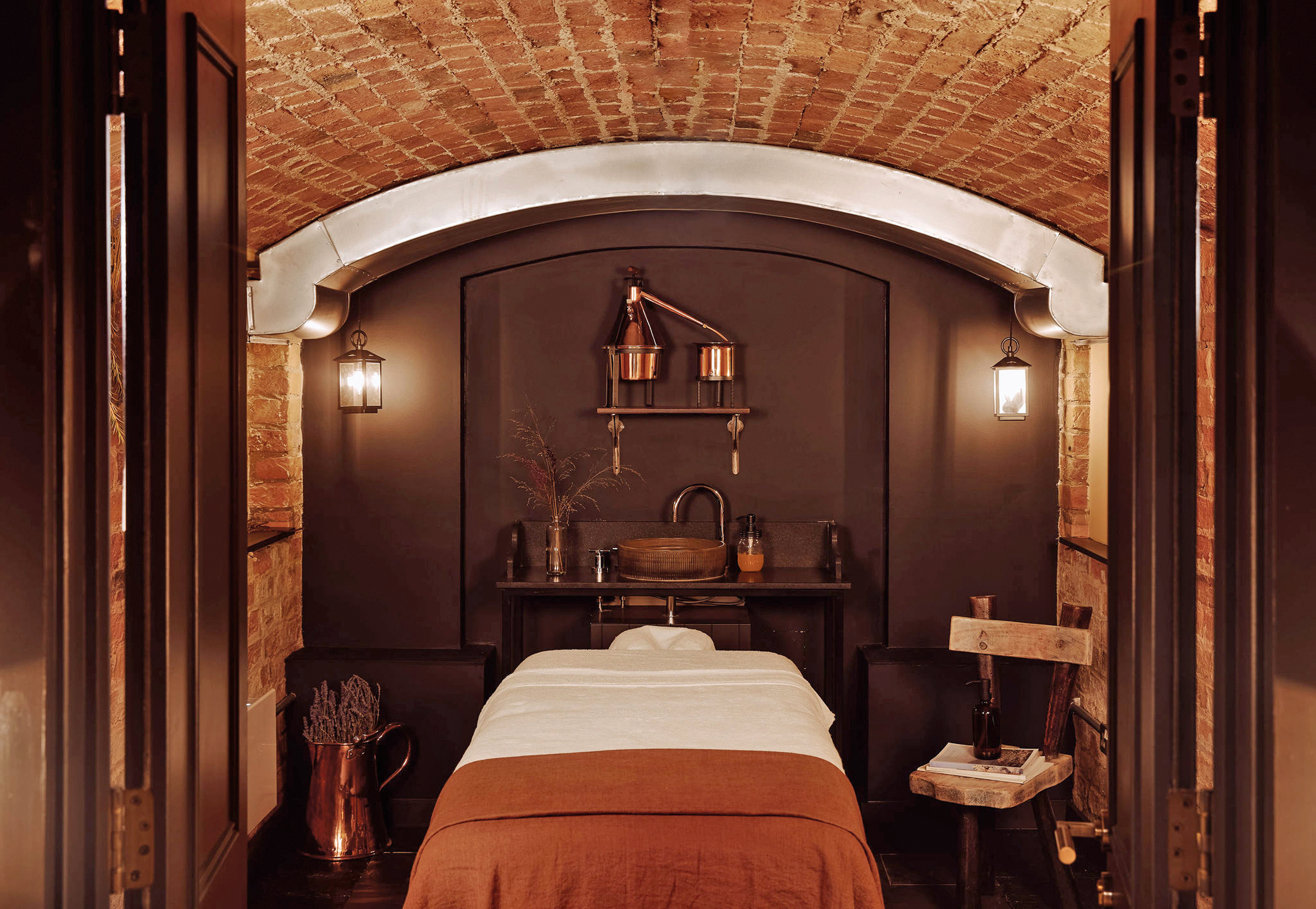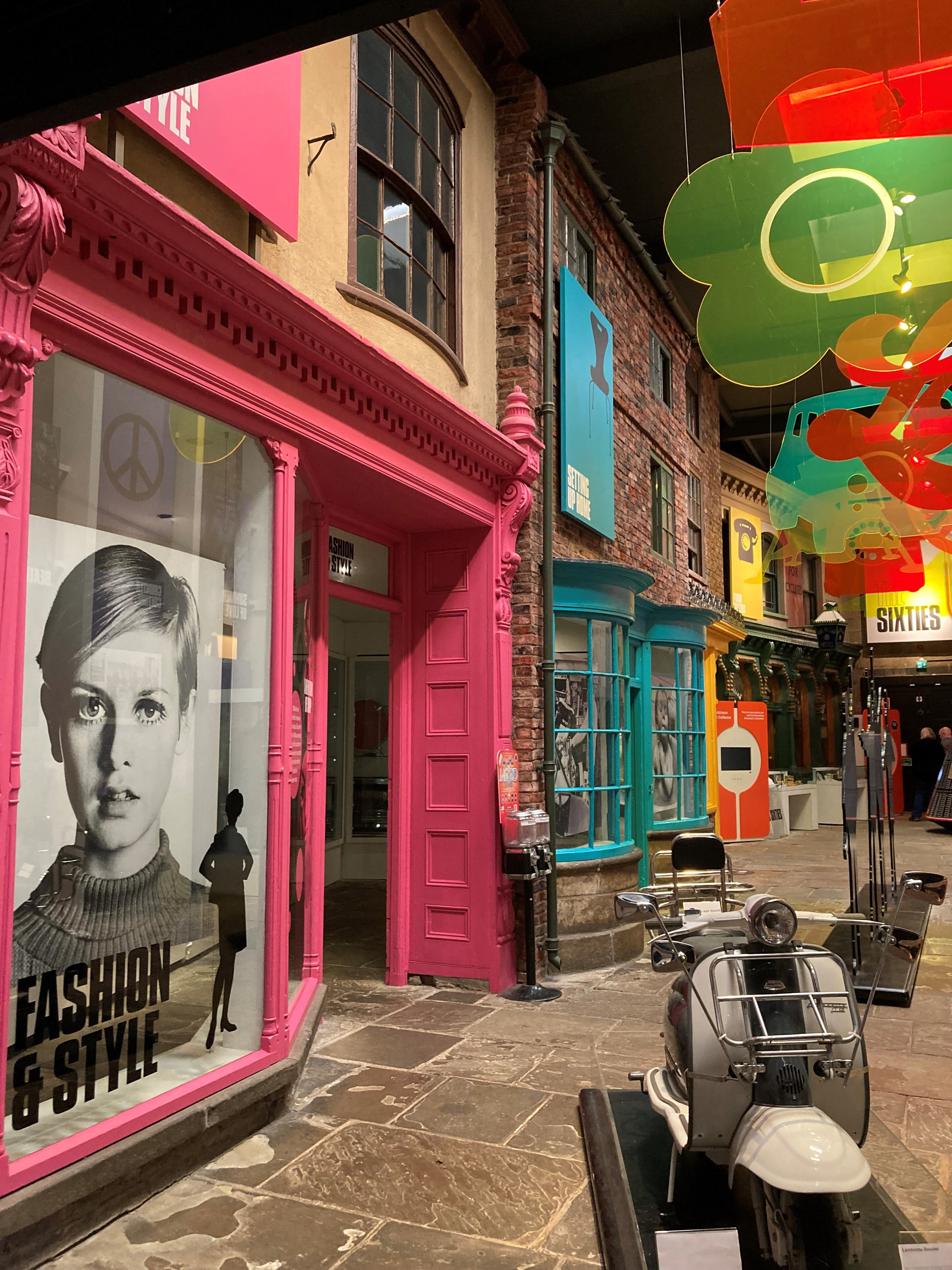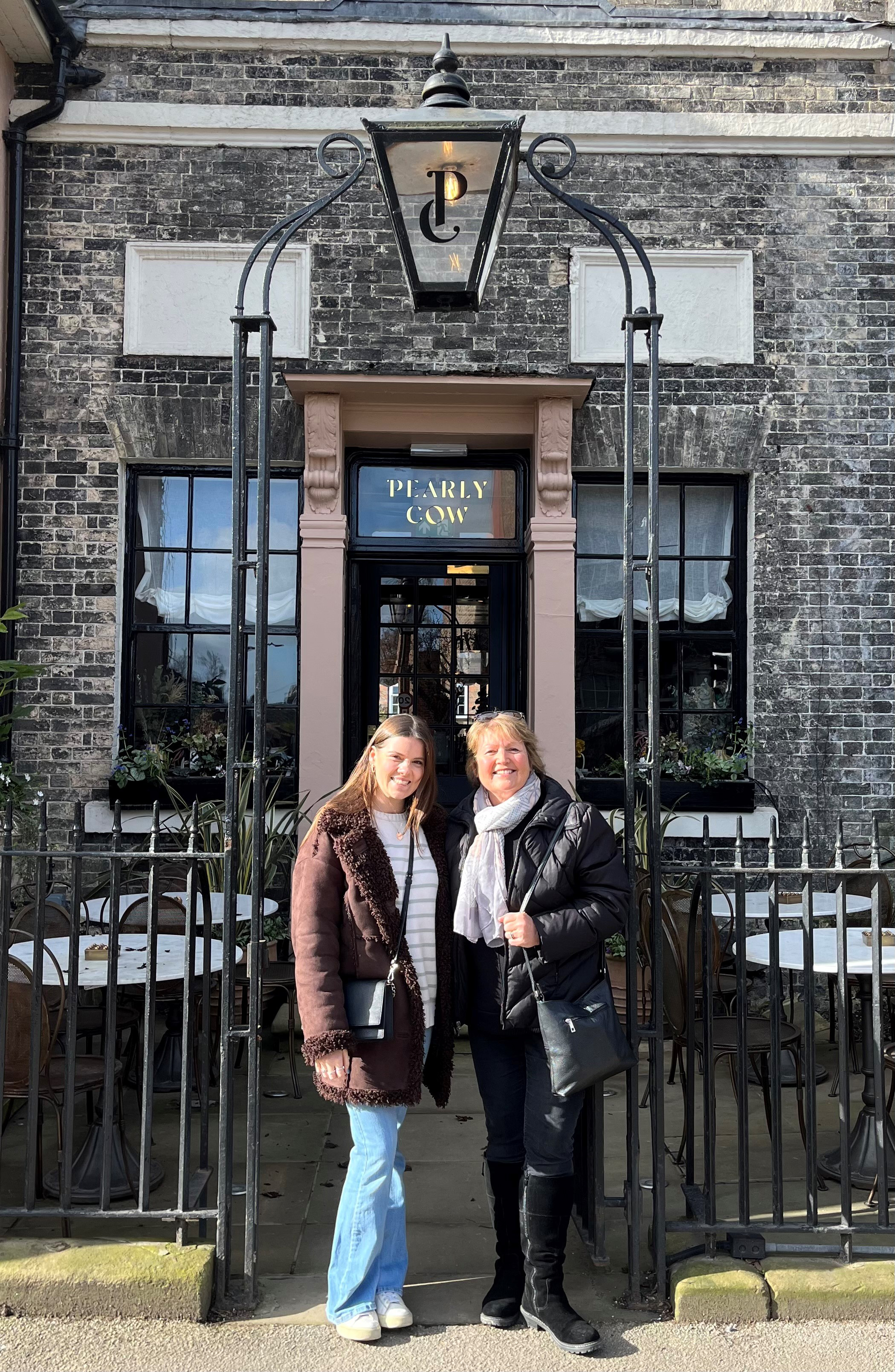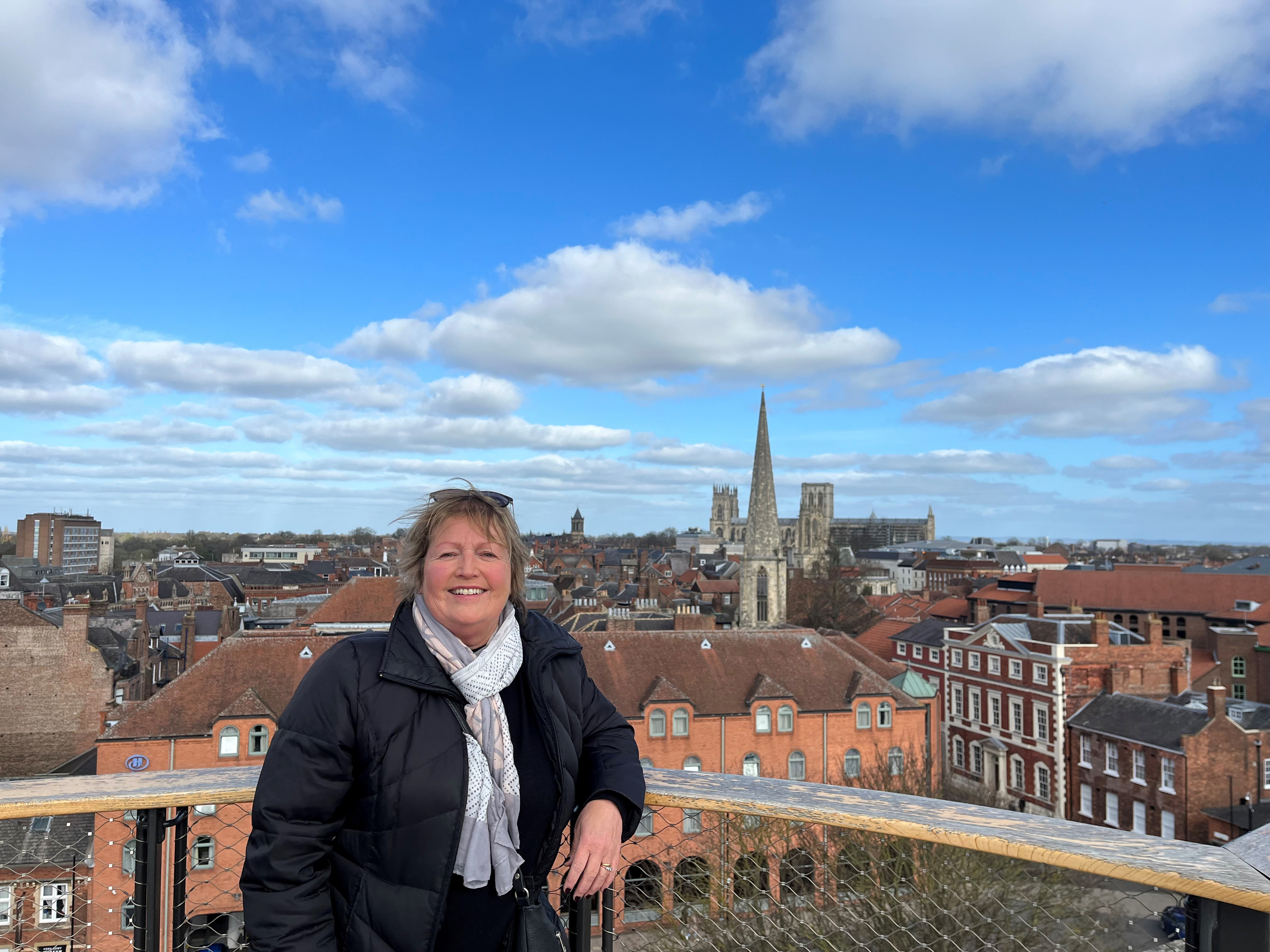I’m lying under an arch of ochre bricks, the scent of rose and jojoba in the air, a therapist working expensive oils into my tired skin.
But that arch of bricks isn’t just an aesthetic addition to the treatment room in the stylish No.1 by GuestHouse, York, a boutique hotel 10 minutes’ walk from the city centre, housed within a Regency Grade II-listed townhouse. That cellar room used to be a World War Two air raid shelter in which the residents would take refuge during the bombings, and I’m told the brickwork is original.
Drifting off within the dimly lit confines, soft music aiding my somnolent state, it’s hard to imagine those less-fortunate wartime occupants huddled together. But this inadvertent step back in time is an ideal way to begin a break with my daughter, Grace, to take in some history, while enjoying the modern draws of the city, namely food, drink, shopping and pampering.

The building dates back to 1829, but the dog-friendly hotel opened little more than a year ago, becoming the second in the GuestHouse boutique group (the first was No.15 by GuestHouse in Bath). Two more are planned: Margate opens in July and Brighton in early 2024.
With 38 rooms, the hotel is a fusion of old and new. Comfortable classic sofas intermingle with contemporary local art on the walls of the Marmalade Lounge (so named because of its orange/yellow colour scheme); the Rhubarb Bar, a nod to the rhubarb fields of West Yorkshire, has a modern cocktail list and a steam train running along the cornice and across the windows to honour York’s status as one of the UK’s oldest railway towns.
Other quirky asides include in-room record players inviting guests to play their picks from its vinyl library. And we soon find the free help-yourself pantry, a must for midnight snacking, offering crisps, sweets, chocolate, soft drinks and ice-cream whenever you fancy them.
A weekend isn’t long enough to see everything in York – so make a list of what you want to do before you come.
You can walk the old wall surrounding the city in about two hours, getting a bird’s-eye view of the historical buildings, and take in the majestic York Minster (yorkminster.org; adults £16) home to the largest expanse of medieval stained glass in the country.
Don’t miss the new sculpture of the late Queen on the outside of the cathedral, unveiled in November by King Charles. It’s also the subject of Sculpting The Sovereign, a new exhibition which goes behind the scenes on the making of the sculpture.
We admire the higgledy-piggledy ancient houses in The Shambles, arguably the best preserved medieval street in the world. Formerly dominated by butchers’ shops, it is now home to a myriad of quirky stores and gateway to a maze of streets housing hidden-away eateries, cake shops and hole-in-the-wall pubs.
To make the most of our stay, we get a Visit York Pass, which allows entry to a number of attractions and saves money if you are visiting multiple museums and other paid-for sights (although you may have to pre-book some attractions).
Those who like an interactive experience might head for the JORVIK Viking Centre (jorvikvikingcentre.co.uk; adults £15) and jump on its famous ride to experience the sights, sounds and smells of Viking-age York, or walk through Kirkgate, a recreated Victorian street complete with olde worlde shopfronts, mock horse and carriage awaiting, at York Castle Museum (yorkcastlemuseum.org.uk; adults £13 online/£16 walk up), the former county jail.
Meanwhile In celebration of the coronation of the King, York Minster is currently staging an exhibition (runs to October 1) tracing the influence of the monarchy throughout the cathedral’s history.
Yet a trip to York, which claims to have more attractions per square mile than any other city in the UK, is as rich in modernity as it is in the past.

We head to the new Sixties exhibition in York Castle Museum, an avenue of retro heaven. Featuring images of Twiggy to a Lambretta scooter, Beatles singles and fashion by Mary Quant, it’s a nod to the experiences of people in the city, all with hippie dizzy orange and pink ‘flower-power’ signage above.
Yes, there are crowds at peak times, but York is a surprisingly walkable city, largely because so much of the centre is pedestrianised, so the clog of traffic doesn’t feel quite so prohibitive to the visitor.
Shopping is eclectic, tea rooms and cafes offering a plethora of mouthwatering pastries, and cakes are around every corner and there’s a sophisticated restaurant scene.
We happen upon Los Moros (losmorosyork.co.uk; small plates from £6), a cosy ‘Modern North African Kitchen’ eaterie in Grape Lane, the Moroccan-style tiles in shades of mustard, charcoal blue, teal and terracotta creating a North African feel.
Made with ingredients bought locally and made in house on the day, our lunch is a feast of mouthwatering home-made hummus with sprinklings of sumac, za’atar and rose harissa and piping hot crispy spinach and feta bourekas with Yorkshire honey.
Refreshed, we head for the shops, passing the queues for the ghost tours (York is reputedly the most haunted city in the world), browsing the tiny art galleries, independent boutiques, hand-crafted jewellery shops and botanical havens within the medieval and Georgian architecture of Stonegate and Swinegate.
Later, in need of an aperitif, we venture to York Gin’s tasting experience (yorkgin.com; tastings on Friday and Saturday evenings, £30pp) where, over a gin and tonic, naturally, a friendly guide takes us through the history of gin-making.
The cosy Tudor shop, a stone’s throw from The Shambles, is closed during the tastings as we discover more about the myths and legends of our favourite tipple.
Sampling five types in shades from clear to deep pink and blue, featuring notes of everything from Earl Grey and citrus to chocolate and orange, it’s a social, intimate setting as we mull over the flavours with other guests and discuss the importance of a good tonic.

Back at base, we’re dining at Pearly Cow (pearlycow.co.uk; mains from around £25), a new restaurant which opened in March and is attached to the hotel – although non-resident diners can enter through a separate outside door.
In the Georgian building, featuring natural textures and finishes to blend in with its heritage, we are told that local produce is key – the meat is from specialist Yorkshire farmers, the oysters come from Hartlepool, while Whitby crab and prawns are a regular on the menu.
Sampling a range of delicacies including beef tartare, a platter of fruits de mer followed by a showstopping côte de boeuf, fanned impressively, it feels like delicious local art on a plate. Even the rhubarb crumble soufflé dessert rises to the occasion.
On our last day, we walk off all that food on a brisk stroll to Clifford’s Tower (english-heritage.org.uk; adults from £7.70), the largest remaining building of York Castle, a stone fragment of history which sits atop a huge mound of grass. Climbing the 55 steps to get to the keep, then more stairs to a new walkway and a spiral staircase, we reach the new roof deck which offers a 360-degree bird’s eye view of the city.
From here, we can admire York Minster, the many churches, medieval buildings and old architecture from a different viewpoint, with signs to help us identify all the things we’ve seen at ground level.

But we can also see things we hadn’t previously noticed – the rivers Foss and Ouse which meet at York, churches, old streets and the university on a hill in the distance.
It’s a great way to reflect on the city’s past – and anticipate its exciting future.
How to plan your trip
Doubles at No.1 by GuestHouse, York start from £160 (two sharing), room only. Visit guesthousehotels.co.uk
A One Day York Pass, covering entry to numerous attractions including York Minster, Jorvik Viking Centre, York Castle Museum and Clifford’s Tower, costs £55. Visit yorkpass.com
For information on York, go to visityork.org.
You may also like: The best European train journeys to take this summer for a greener way to explore

